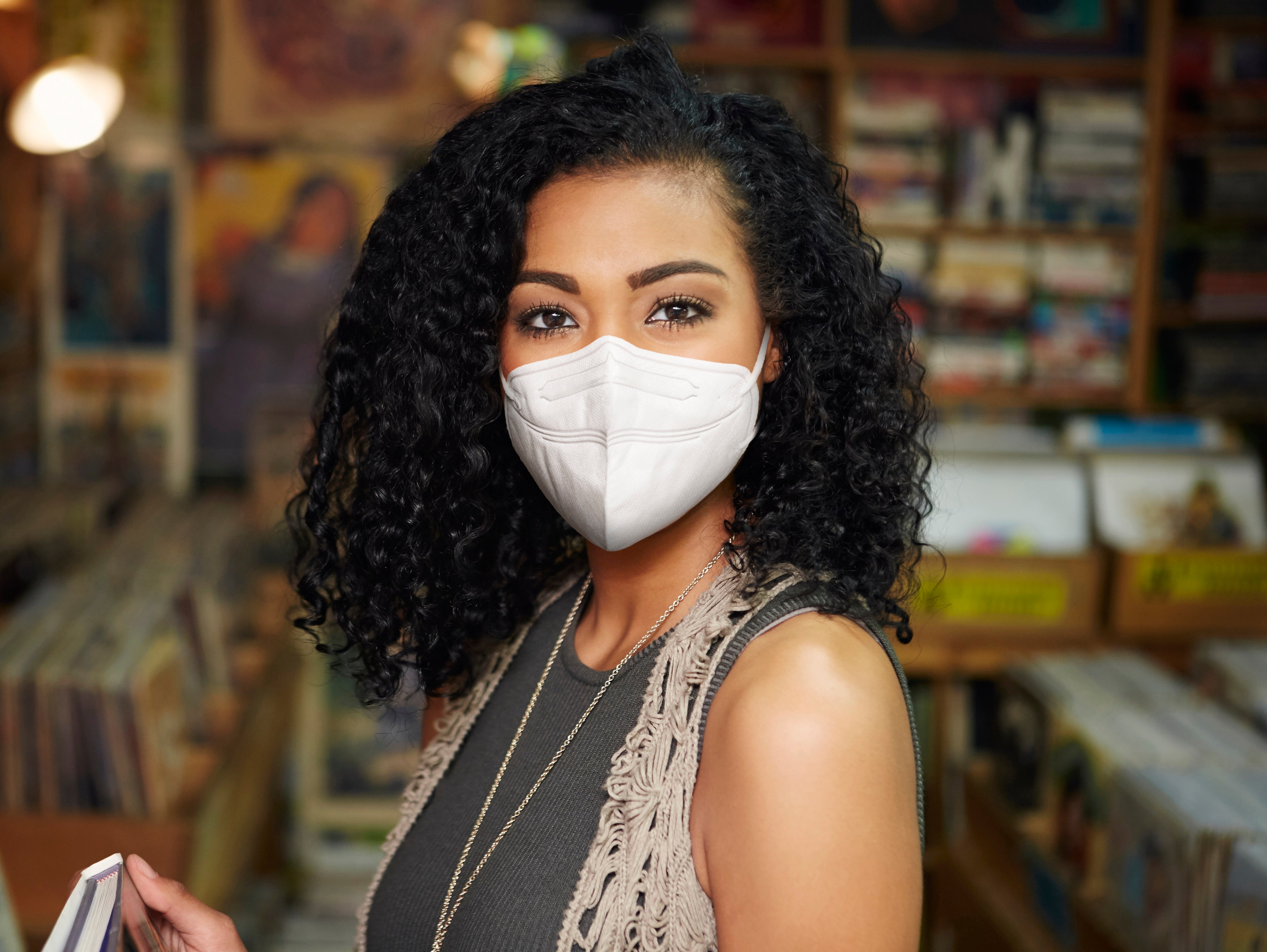
Fit Test Kits
11 products
Showing 1 - 11 of 11 products











Fit testing kits are designed to test the effectiveness of your employees’ respiratory protection quickly and efficiently. Our 3M Fit Test kits can be used with any particulate respirator or gas and vapor respirator with a particulate filter to test facepiece to face seal fit are the first fit test kits that satisfy OSHA requirements.
How to Determine Correct Respirator Sizing
There are two primary types of fit testing, a Qualitative Fit Test or a Quantitative Fit Test. There are few major differences between the two tests, specifically in the types of respirators they can test. Here are the primary differences between the two types of tests:
Qualitative Fit Test (QLFT)
A qualitative fit test (QLFT) may only be used to fit-test:
- Negative-pressure, air-purifying respirators, as long as they’ll only be used in atmospheres where the hazard is at less than 10 times the permissible exposure limit (PEL), or
- Tight-fitting facepieces used with powered and atmosphere-supplying respirators.
QLFT is pass/fail and relies on the user’s senses using one of four OSHA-accepted test agents:
- Isoamyl acetate (banana smell); only for testing respirators with organic vapor cartridges.
- Saccharin (sweet taste); can test respirators with a particulate filter of any class.
- Bitrex® (bitter taste); can also test respirators with particulate filters of any class.
- Irritant smoke (involuntary cough reflex); only for testing respirators with level 100 particulate filters.
Each QLFT method uses seven exercises performed for 1 minute each:
- Normal breathing.
- Deep breathing.
- Moving head side to side.
- Moving head up and down.
- Bending over (or jogging in place if fit test unit doesn’t permit bending at the waist).
- Talking.
- Normal breathing again.
Quantitative Fit Test (QNFT)
A quantitative fit test (QNFT) can be used to fit-test any tight-fitting respirator. It involves using an instrument to measure leakage around the face seal and produces a numerical result called a “fit factor.”
There are three OSHA-accepted QNFT test protocols:
- Generated aerosol uses a non-hazardous aerosol such as corn oil generated in a test chamber.
- Condensation nuclei counter (CNC) uses ambient aerosol and doesn’t require a test chamber.
- Controlled negative pressure (CNP) uses a test that creates a vacuum by temporarily cutting off air.
QNFT is pass/fail and relies on the user’s senses using one of four OSHA-accepted test agents:
- A fit factor of at least 100 is required for half-mask respirators and a minimum fit factor of 500 for a full facepiece negative-pressure respirator.
Each QNFT method uses seven exercises performed for 1 minute each:
- Normal breathing.
- Deep breathing.
- Moving head side to side.
- Moving head up and down.
- Bending over (or jogging in place if fit test unit doesn’t permit bending at the waist).
- Talking.
- Normal breathing again.
In addition to these 7 tests, “grimace” test where the subject smiles or frowns for 15 seconds is also required.
Is Quantitative Fit Testing Better than Qualitative Fit Testing?
US OSHA accepts both QLFT and QNFT. Studies have been published regarding the advantages and disadvantages of QNFT. It should be noted that little to no correlation was found between quantitative fit factors and respirator performance unless poor-fitting respirators were included in the analysis. In other words, those subjects who failed a quantitative fit test also showed lower respirator performance. But higher fit factors above the minimum requirement did not necessarily translate to higher respirator performance. Rather, wearers who pass either a qualitative or quantitative fit test and are part of complete respirator program that meets all local regulatory requirements can expect their respirator to reduce inhalation exposure according to the assigned protection factor (e.g., by a factor of 10 for half facepiece respirators).
Compatibility with other PPE
Safety glasses, hearing protection, face shields, hard hats and coveralls can all vie with a respirator for real estate on a person's face, head or body.
To catch these problems before they happen on the job, OSHA requires any PPE that could interfere with the respirator's seal to be worn during the fit test.
User seal check: An essential everyday test
A user seal check ensures the tight-fitting respirator is being worn right each time the user puts on the respirator. Employees are required to do so by OSHA regulations unless the use is voluntary
Users can either perform a positive-pressure or negative-pressure seal check as described in the product User Instructions
Respirator Rules of Thumb
Leave the area immediately and then check your mask and/or filters if:
- If you can taste it
- If you can smell it
- If you can feel it
- If you feel drowsy, dizzy, confused, or nauseous
- If it stings, irritates or causes discharge (runny noses, etc..)
- If something feels or seems wrong
It is important to note that not all chemicals cause side effects. Some are odorless, tasteless, and have no symptoms other than injury or death.
Respirator fit test kits are essential tools for ensuring the effectiveness of personal protective equipment (PPE), such as respirators. There are two types of fit testing methods: qualitative testing and quantitative testing. Qualitative face fit testing kits use a pass/fail approach to evaluate the fit of a respirator on the wearer, while quantitative testing involves measuring the level of airborne particles inside and outside the mask to determine the level of protection it provides. Both methods require the use of fit-testing equipment to ensure the accuracy and consistency of the results. A test subject must wear the respirator during the test, and the results of the fit test determine whether the respirator provides adequate protection against hazardous airborne particles.











